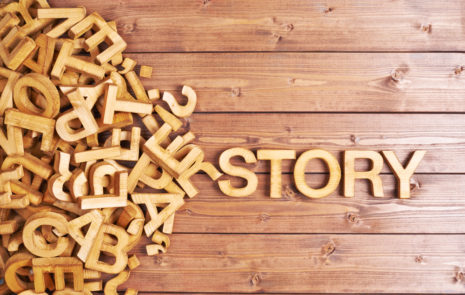
Be buyers’ guide: connect the dots clearly

When you use a Message Map, it’s easier to become your buyers’ guide.
A Message Map performs several critical jobs for marketers – and for buyers.
First, a Message Map identifies the important points buyers should consider when pondering a purchase. It educates buyers on what to look for, how to compare competitors’ offerings and which questions to ask sellers.
A Message Map makes it easier for marketers to provide buyers a clear path forward.
So, it’s easier for buyers to find their way through the buying journey. That’s what being a buyers’ guide is all about.
Make sure your prospects and customers never get lost in your marketing message. Keep your story clear, concise, compelling and consistent with a Message Map.
Message Maps help marketers, salespeople and spokespersons stay on track with one consistent message from a brand. That makes it far easier for buyers to follow you and to understand how you can benefit them.
A Message Map answers buyers’ eternal question: what’s in it for me? (WIIFM?)
By beginning with benefits, your message draws buyers in. So, they can begin the buying journey with your brand.
The heart of your Message Map is your home base. Great home base messages answer the question “Why?” by telling buyers exactly what’s in it for them?
Here are examples of great home base messages:
- Orthodontists are the experts in creating healthy, beautiful smiles (The American Association of Orthodontists).
- Health care plan provider AvMed helps you grow healthier and happier.
Sometimes buyers begin to consume your message with your home base. Other times, they begin with a question at a remote point on your Message Map.
Either way, bring them all the way home to your home base message. Take every opportunity to repeat your home base message, so buyers clearly understand the ultimate benefit they get.
Repeating your home base helps the message sink in.
It focuses on the most important part of the message that you want buyers to remember. When you answer a question, always bring your message the way home to your home base.
For example, a health care plan buyer might ask, “How does AvMed help me get healthier?”
An answer: “AvMed helps you eat tasty healthy food, make fitness fun, and achieve a balanced life so you stay happier and healthier.”
Don’t stop right after you answer a question. Build a bridge back to home base.
Be disciplined: repeat your home base message consistently over time.
Repetition is how your message sinks in with buyers. Messages that are repeated consistently earn a place in buyers’ place cells, where humans store ideas that are unchanging.
Consistency is key, since the place cells in human brains never run out of capacity – unlike other places in the brain where memories are stored and quickly forgotten.
When you bring your message all the way home, it can make an incredible difference.
True story:

At Ameritech, I coached the chief financial officer (CFO) of our Fortune 50 company on his quarterly earnings announcements. He was frustrated that, despite interviewing each quarter with reporter from The Wall Street Journal, he never got quoted in stories.
So, he took training on Message Maps. He learned to always bring the message all the way back to home base. It made all the difference in getting him quoted in The Wall Street Journal.
Before using a Message Map, he’d hear a question like, “How fast did your cellular business grow this quarter?” and answer factually: “It grew by X million customers or YY%.”
The problem: the reporter was already looking at our company’s earnings release, which covered all the facts. To the reporter, repeating facts without a story to provide context didn’t seem worth a quote.
After our CFO learned Message Maps, he’d answer the same question in a new way: “Our cellular business grew by X million customers or YY%, which reflects Ameritech’s strategy to deliver double-digit growth to shareholders.”
With answers like that, of course our CFO began getting quoted regularly in The Wall Street Journal.
In fact, he became such a believer in Message Maps that he refused to do news media interviews without one. By using Message Maps, he always stayed 100% on message.
That consistency helped to clarify the company’s strategy, and increase the value of the business in the eyes of shareholders, customers and employees.
It’s crucial to guide your audience on a clear path through your message. A Message Map gets and keeps your buyers on the right path.
Answer or address all your customers’ questions. But never stop with a dry recitation of figures, facts or bullet points.
Always, always, always bring your audiences all the way home to your home base message. Always tell them what’s in it for them.
Use your Message Map consistently. Over time, you’ll find that more people buy into your story than ever before.
Related Posts
Who tells your company’s story best?
When it comes to telling your company’s story, who’s your best storyteller? Is it your founder, CEO, salespeople, marketers, human resources, or customers? This question...
Why Careful Buyers Need Content Marketing
Most consumers develop ingrained shopping habits. We consistently shop at the same supermarket, frequent a favorite dry cleaner, and drink coffee from our usual...
Three ideas for your marketing message
People in your audience can absorb only one message at a time. That’s why your Message Map needs to build around one main message,...
5 Stepping Stones To Content Marketing Success
Salespeople no longer guide the buyer’s journey. BtoB buyers do 2/3rds of the buying process online, and only 1/3rd with sales, says Sirius Decisions....





